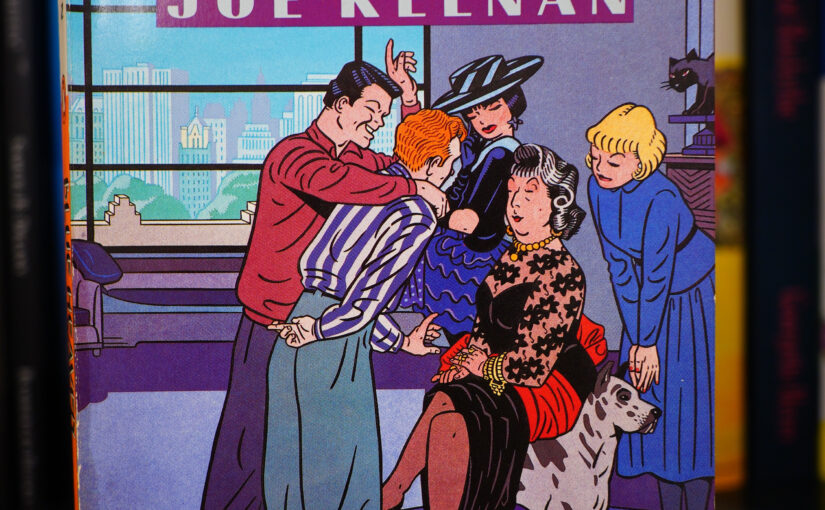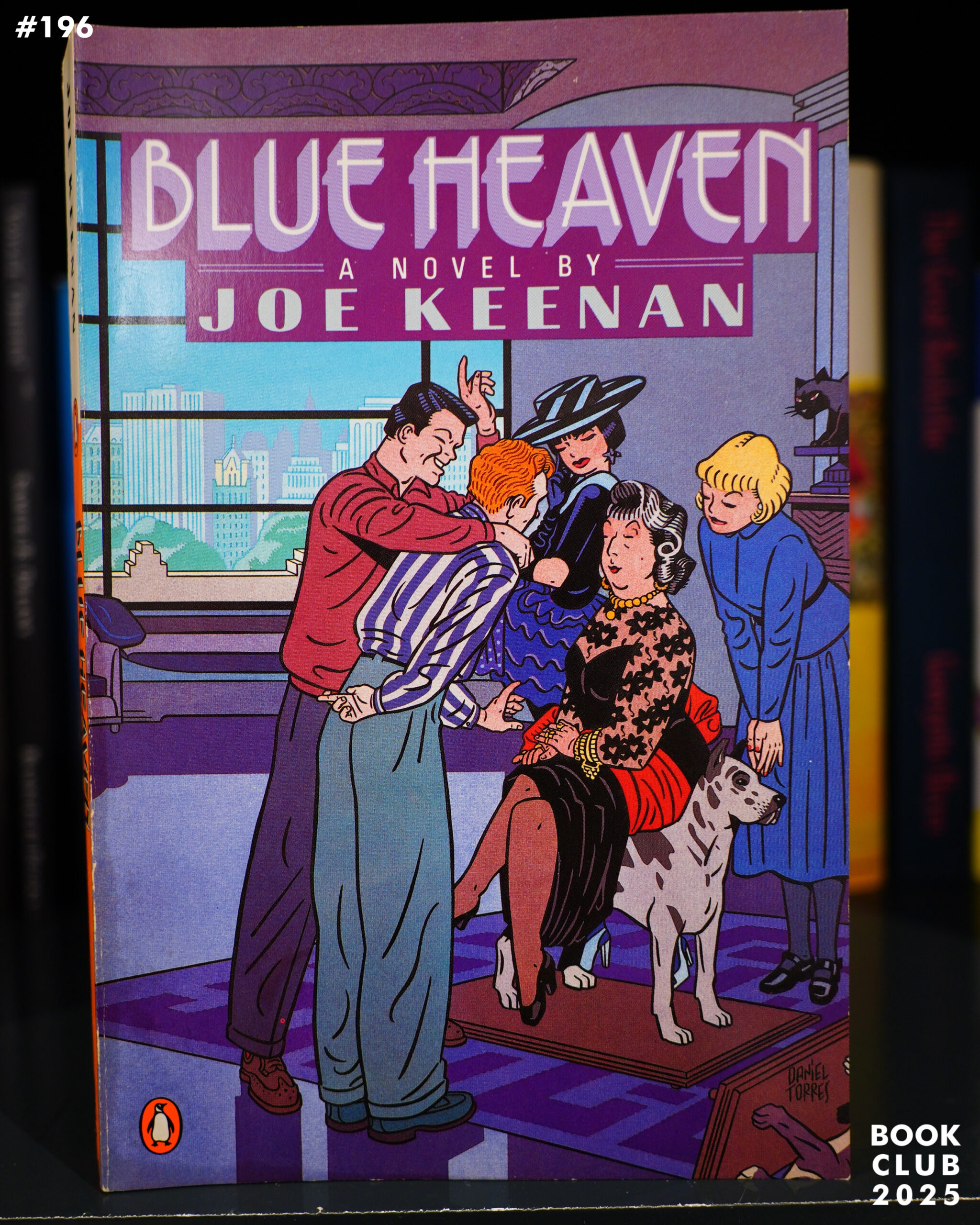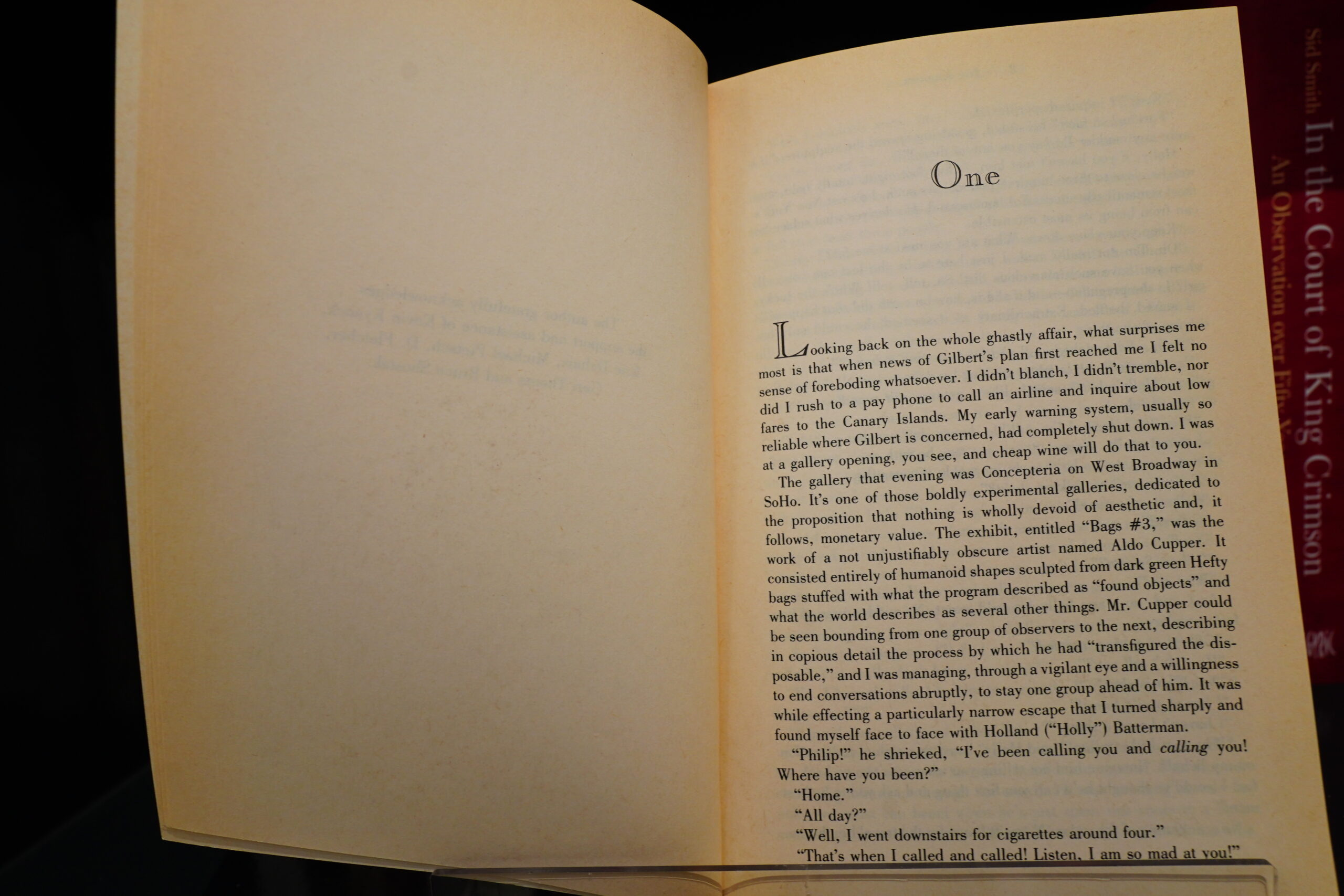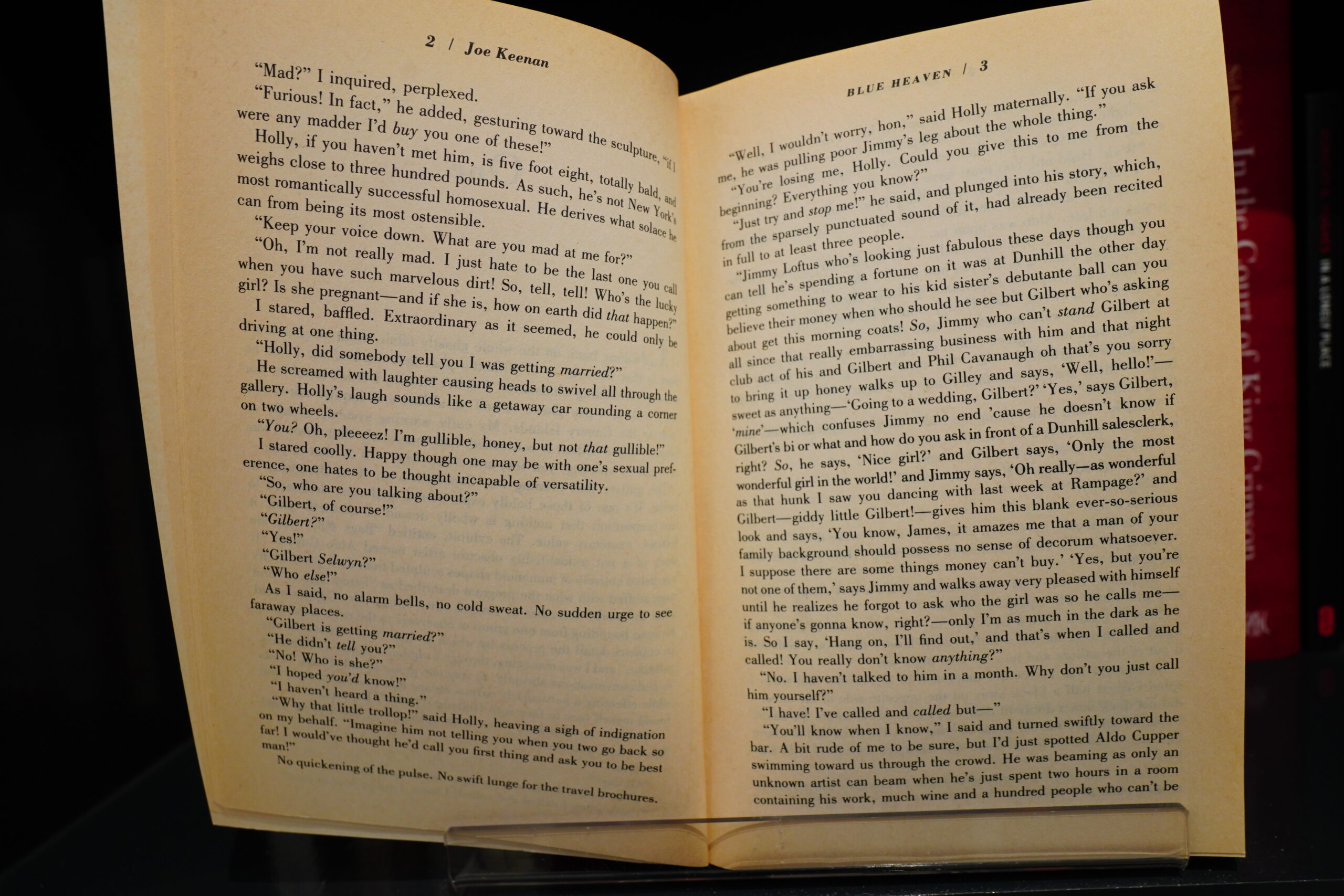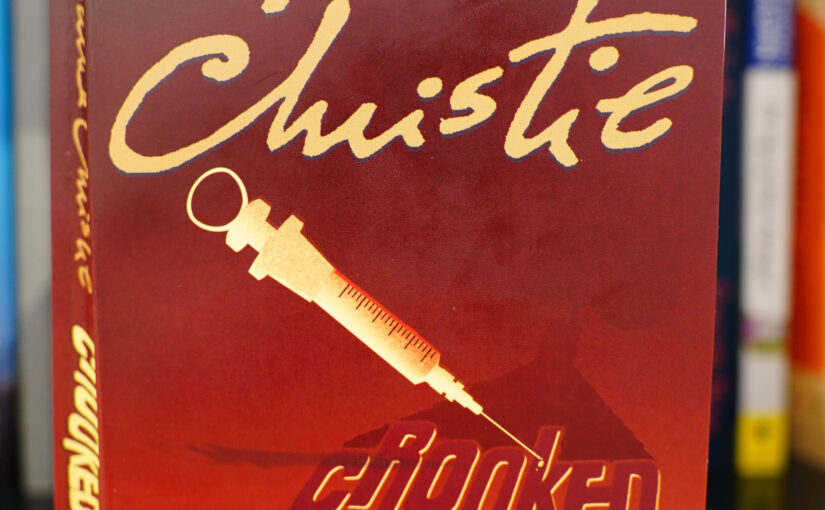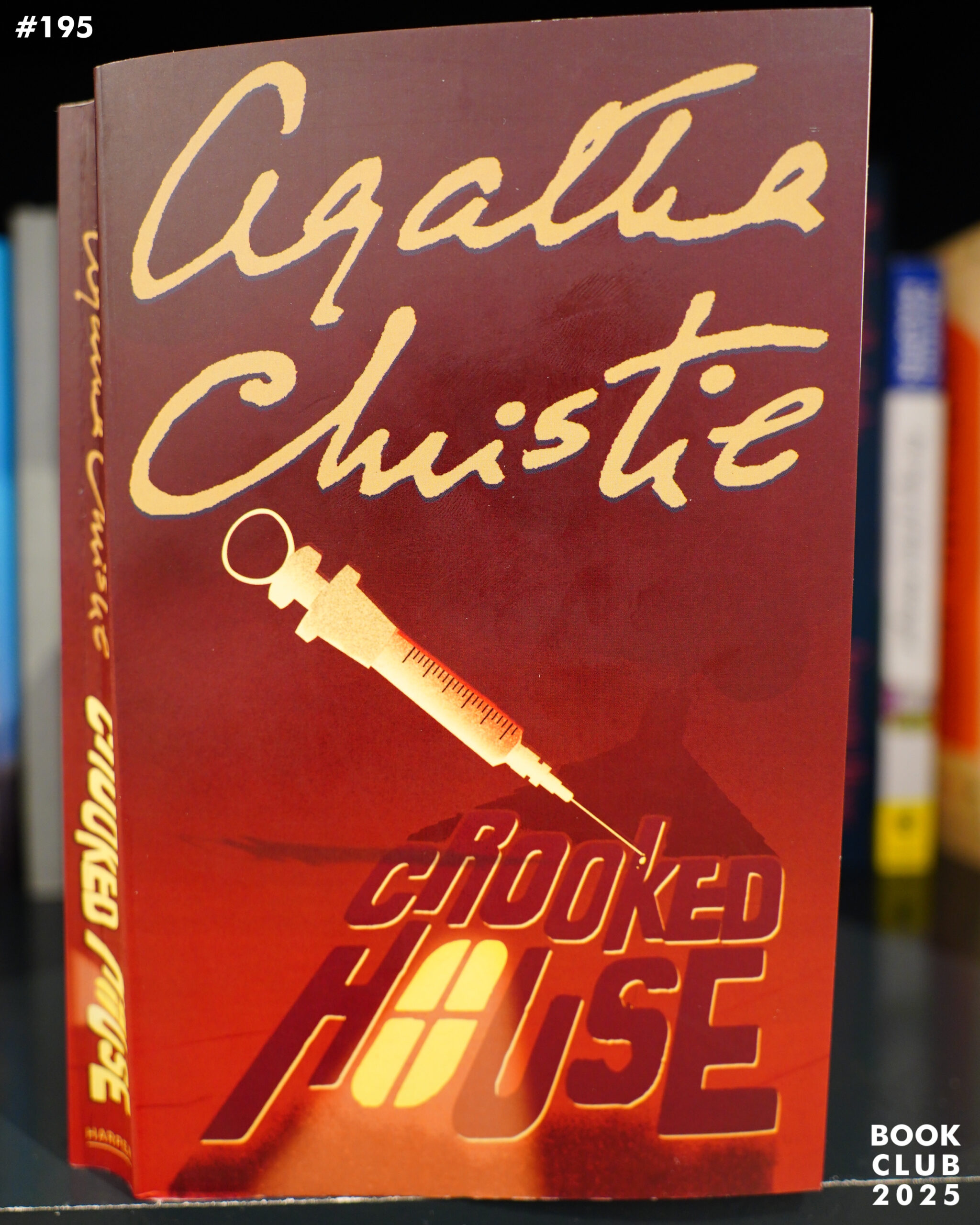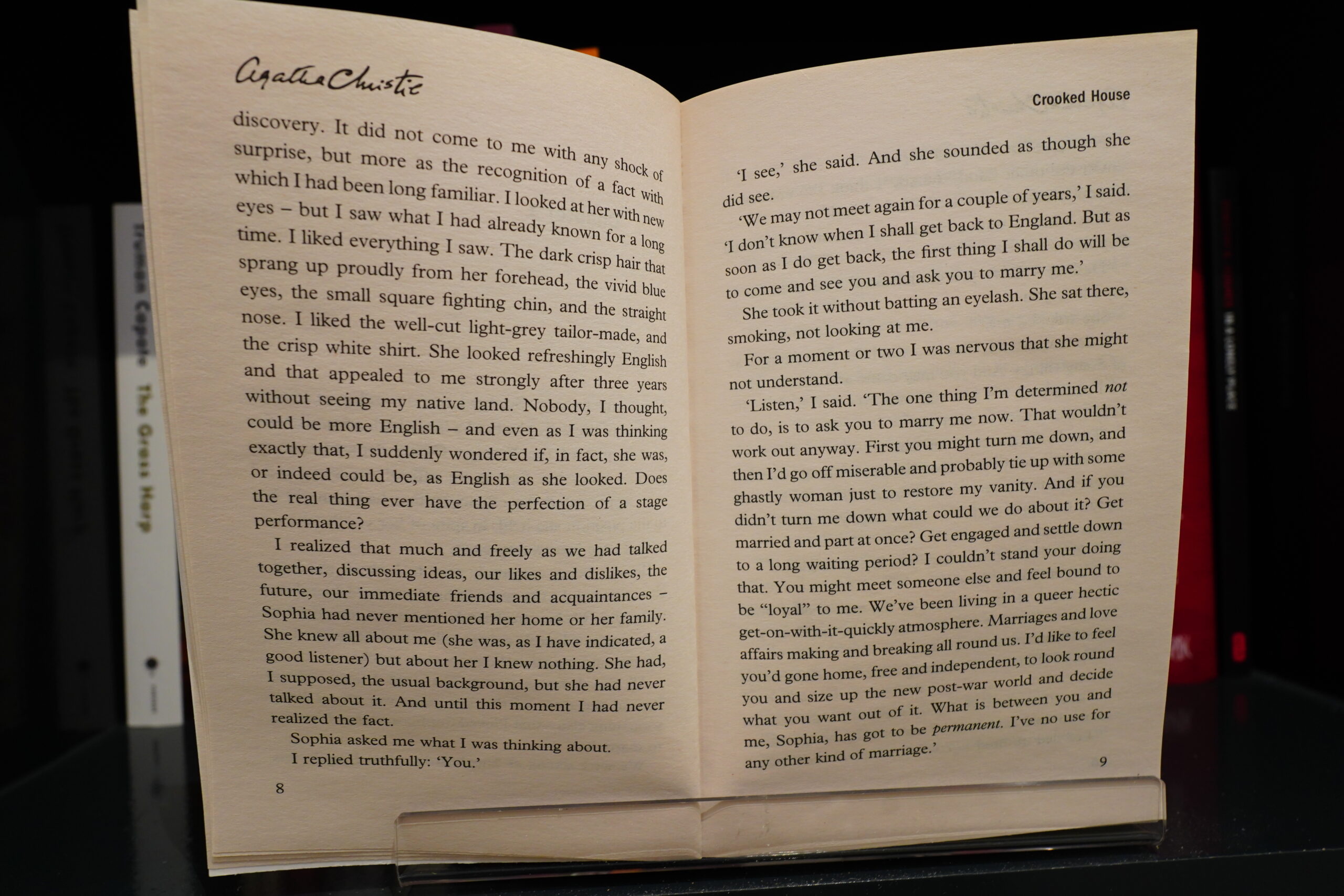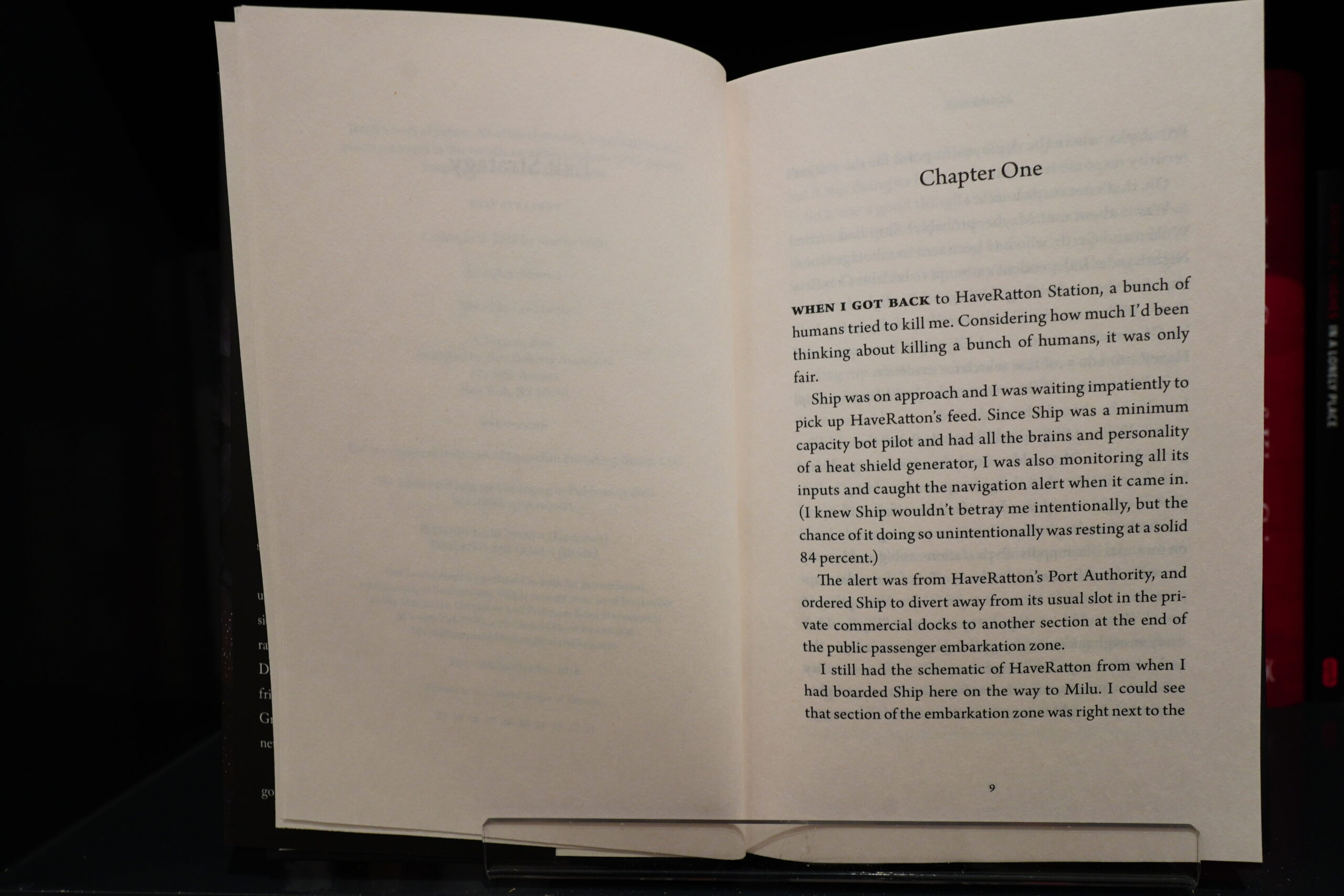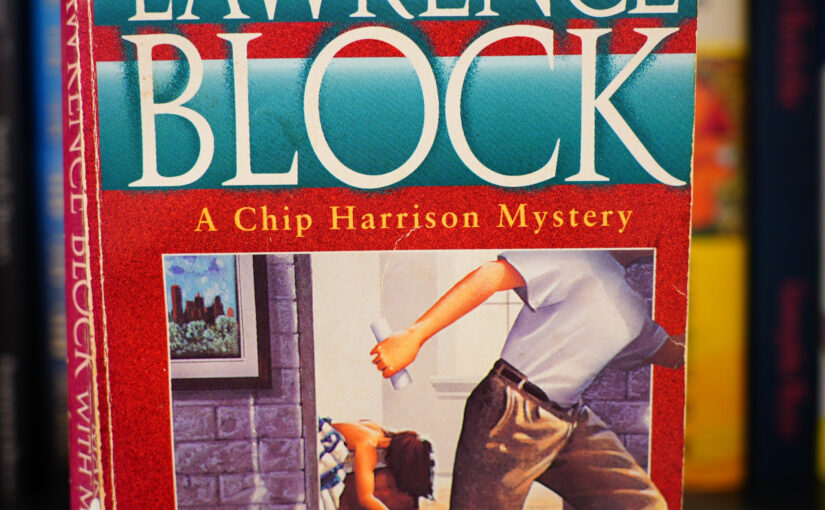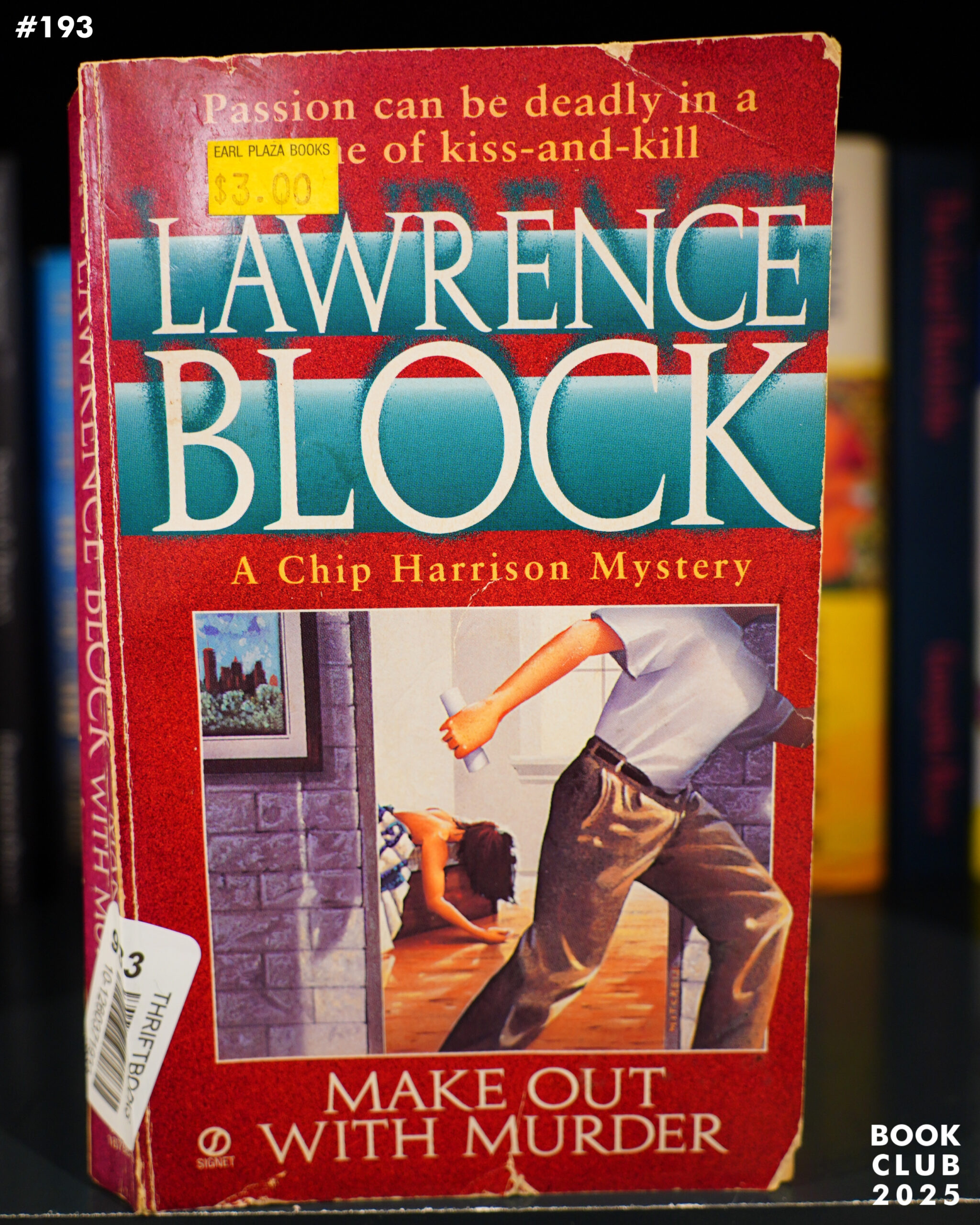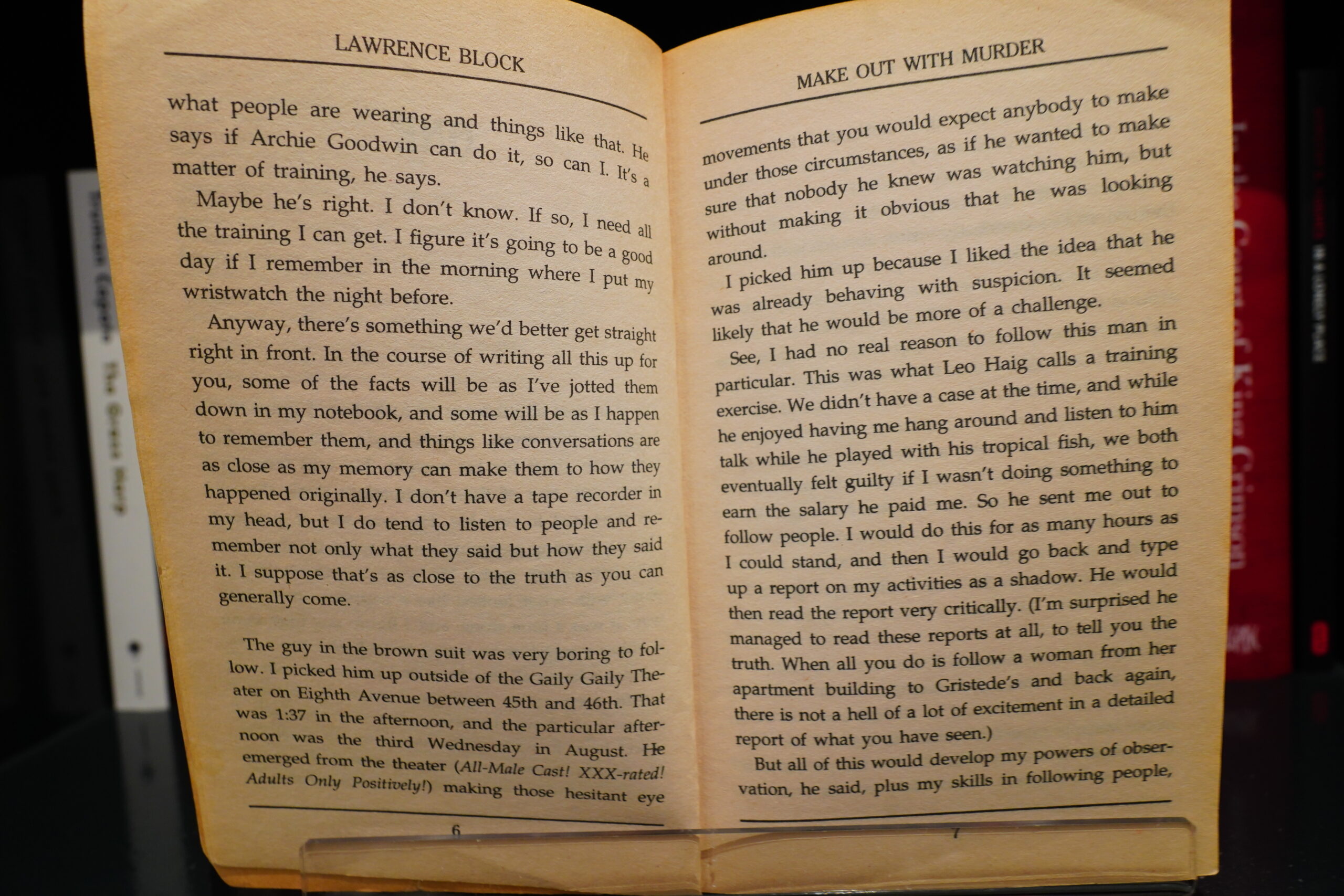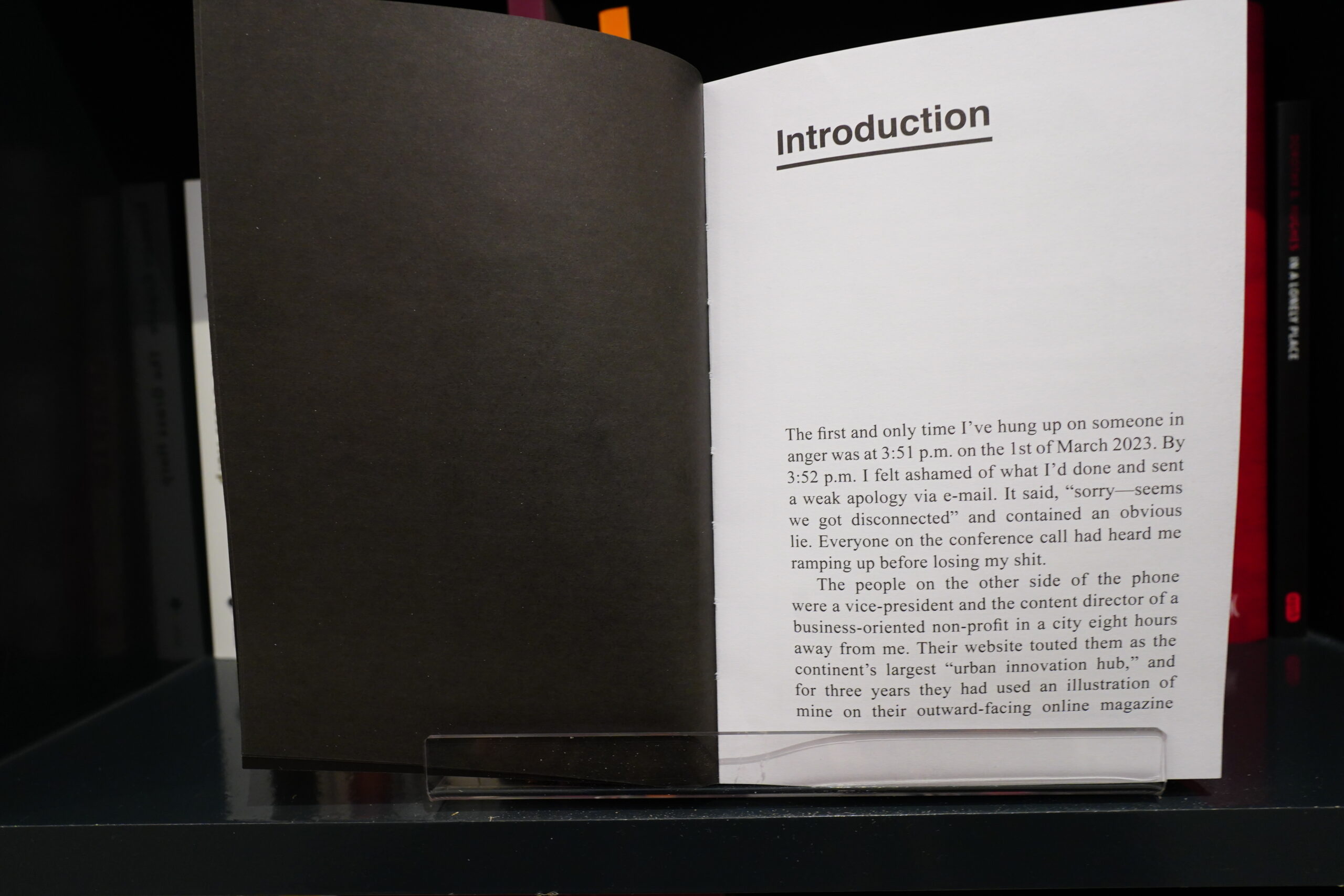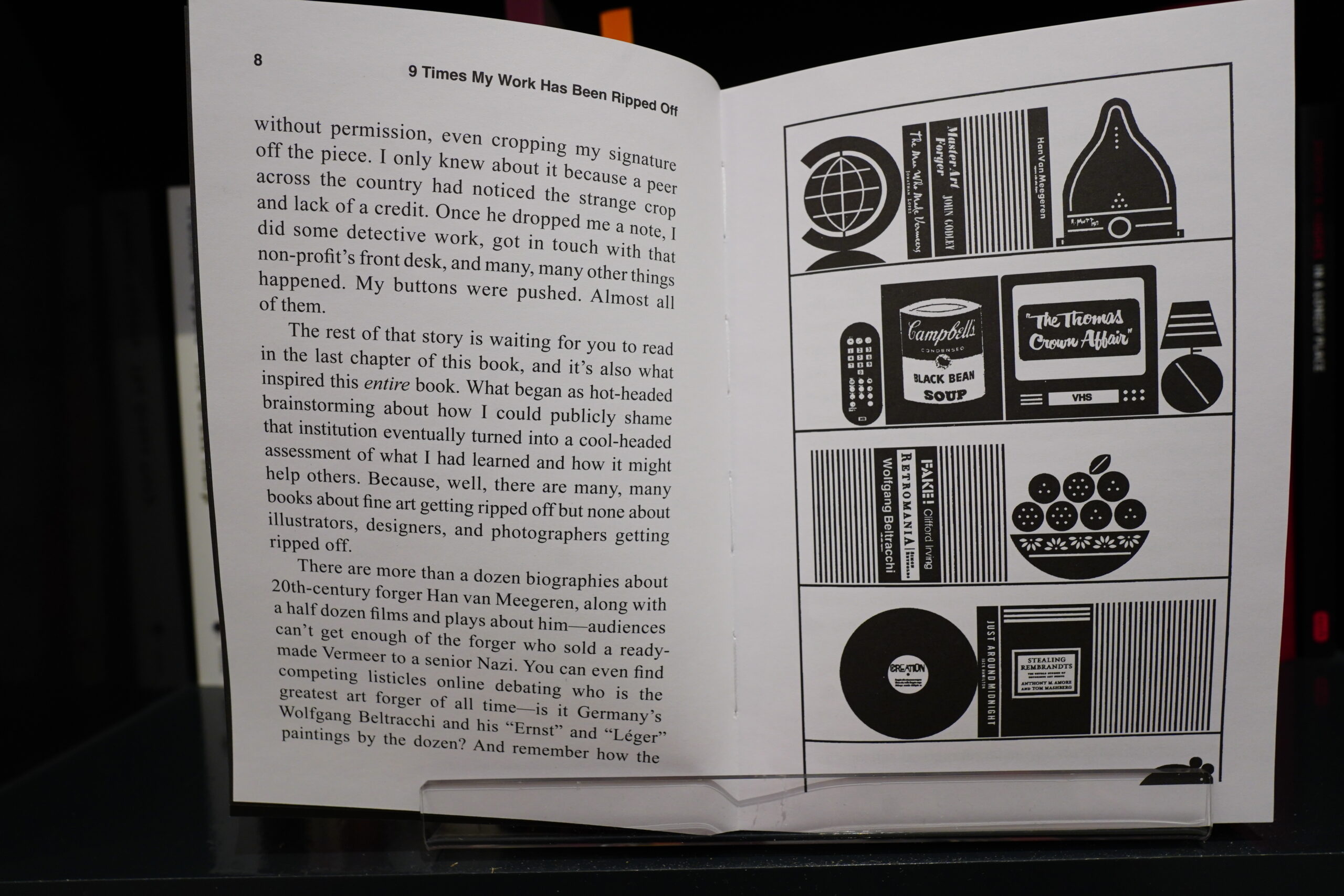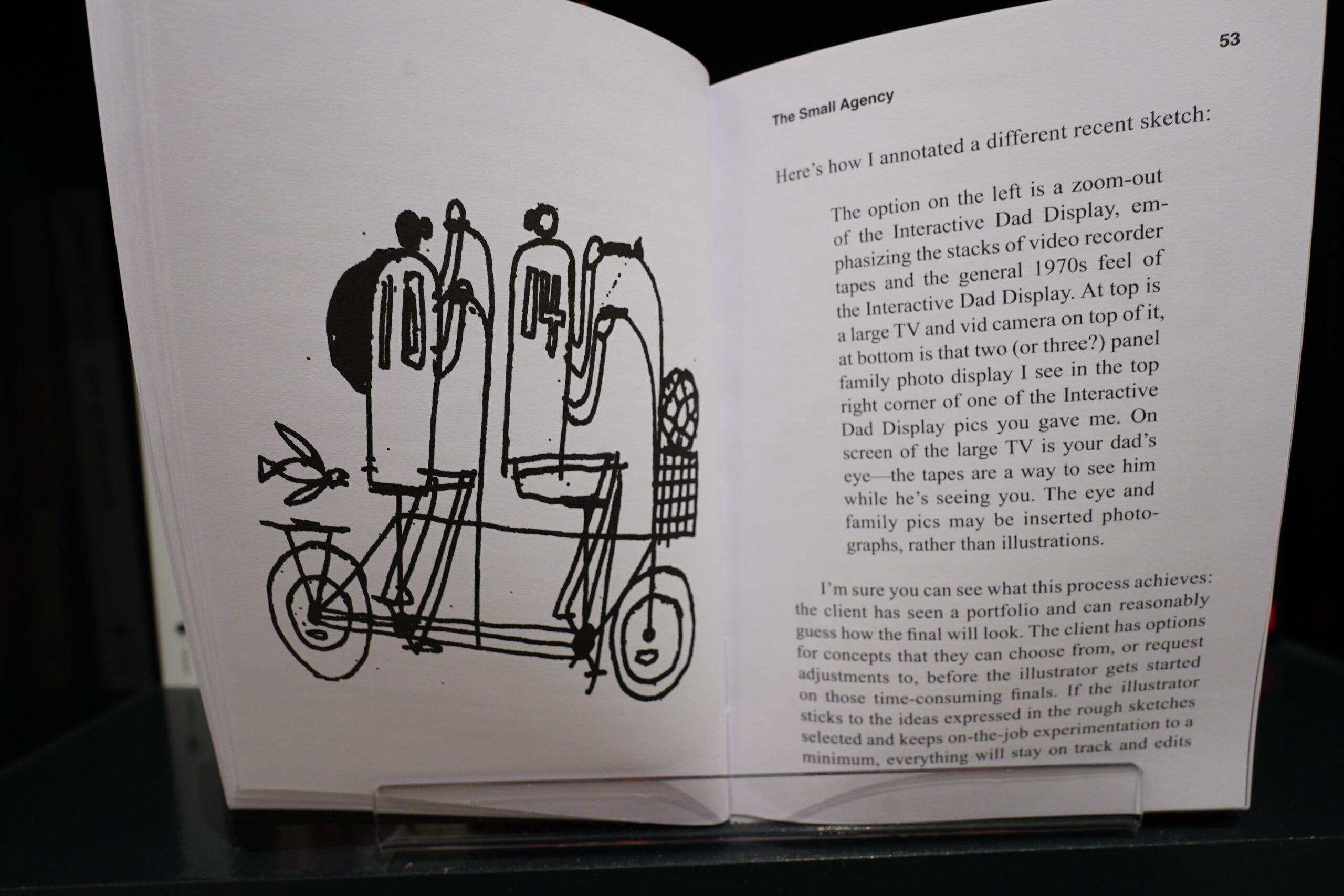What a great cover by Daniel Torres.
I’m still feeling under the weather, so I wanted something fun and easy to read. And so I reached for Blue Heaven, which I’ve read before (although probably thirty years ago) and remember as being just the thing.
And it is and it isn’t. As the cover copy states, the book goes for a P. G. Wodehouse thing… but it’s way more complicated than one of Wodehouse’s farces are, and has much higher stakes. It’s a comedy of errors about a group of friends that find themselves swindling the Mafia out of money — so there’s the uncomfortable tension between the farce and the unusually high stakes.
But that’s not really the real problem for me as a relaxing read — the problem is that there’s a gazillion characters, so many plot twists, and so many jokes that it’s just exhausting to read. I mean, I liked the book on this re-read, too — but it wasn’t ideal for this situation.
(Favourite joke: ‘Bong!’, the musical based on The Bell Jar.)
What I’m now wondering is whether this was ever adapted into a movie? I’m guessing not, because they’d have to cut and cut and cut the plot down to make it fit, and if you cut that much, you’re just left with a skeleton mobster heist comedy, which has been done many times before. The genius of this book is in the particular details… but perhaps it would make a very funny eight episode TV season?
Blue Heaven (1988) by Joe Keenan (buy used, 4.15 on Goodreads)
